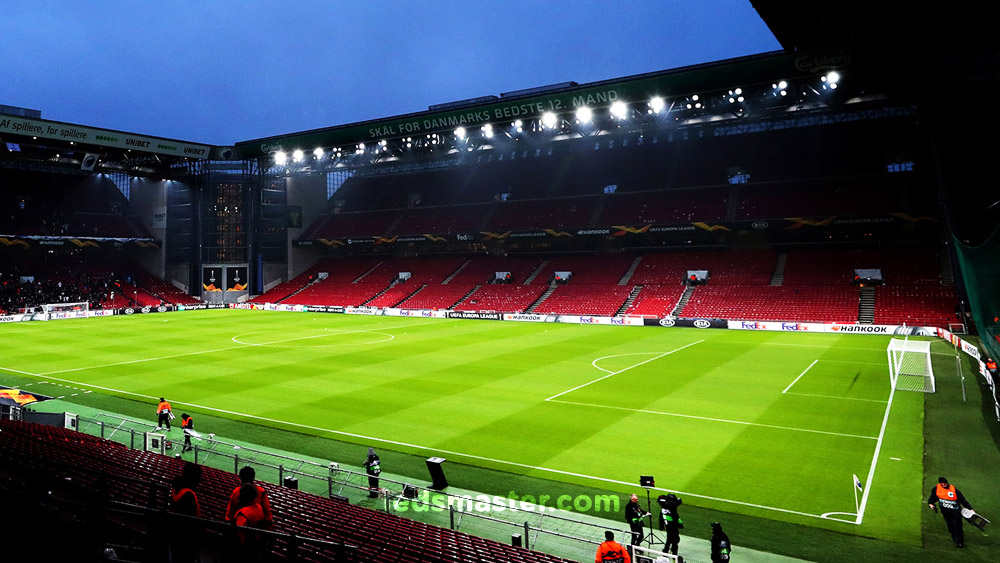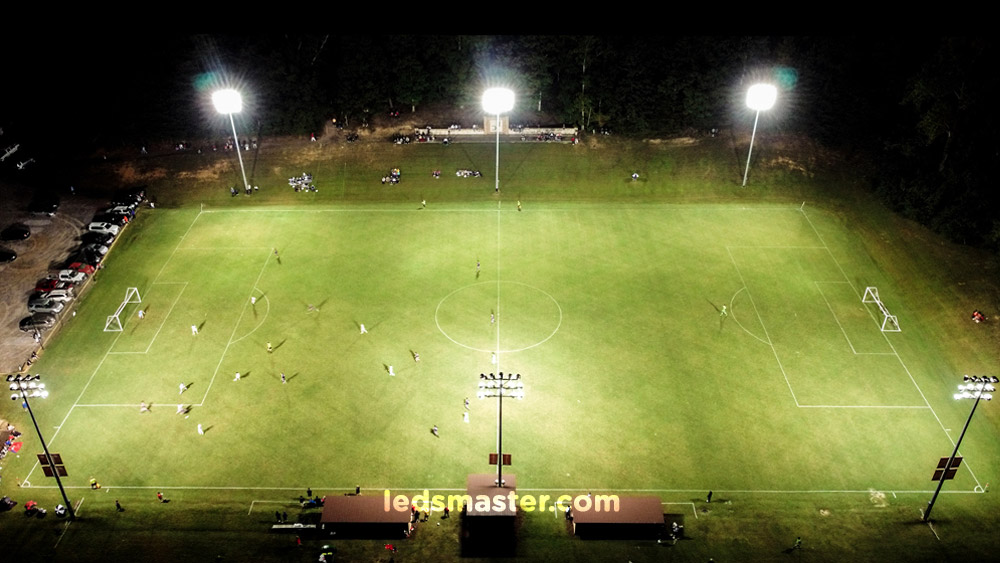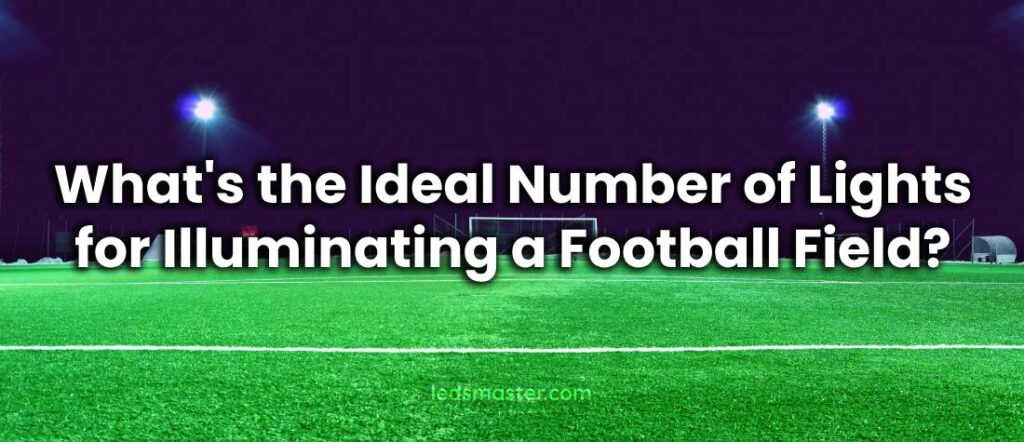Table of Contents
ToggleIntroduction
When illuminating a football field, various factors come into play, including the necessary lumens and lux levels for the field or stadium. Once this information is obtained, we can determine the optimal number of lights required for adequate illumination. Let’s review some key lux level considerations.

| Type of football field | Lux required | Number of football field lights needed |
| Recreational, or training | 200 to 300 lux | 15 to 25 pcs |
| High school, or amateur competition | 400 to 500 lux | 20 to 40 pcs |
| Professional | 750 lux to 1000 lux | 40 to 60 pcs |
| National TV broadcast | 1000 to 1200 lux with vertical illumination requirement | 80 to 120 pcs |
| International tournament such as FIFA, Premier League, Olympic Games | > 1500 lux with vertical illumination requirement | 150 to 250 pcs |
In the table provided, it’s evident that the required lux levels increase in correspondence with the level of competition. For higher-tier matches, such as professional games, a brighter football field is imperative.
The quantity of lights necessary varies based on these lux requirements. A high school football field, for instance, demands more lighting compared to a recreational or training field. Retrofitting metal halide lights for a recreational or training field typically necessitates around 15 to 25 LED stadium lights.
Conversely, football stadiums designed for international broadcasting tournaments like FIFA and the Premier League may require as many as 250 football field lights.
What’s the Lighting Requirement for a Football Field or Stadium?
The quantity of lights necessary for a football field is influenced by the arrangement of light poles. How many lights are needed per pole on a football field? Let’s consult the table for insights.
| Type of football field | Number of light per pole |
| Recreational | 3 to 6 lights |
| High school | 5 to 8 lights |
| Professional | 8 to 15 lights |
| National, international football tournaments | Up to 50 to 80 lights per pole |
In football fields intended for professional use, a greater number of lights per pole is necessary. For the majority of high school football fields, we typically install 5 to 8 high-power LED stadium lights on galvanized steel poles, positioned at a distance of at least 20 to 30 feet from the sideline.
In a football stadium, we typically have approximately 50 to 80 lights on the light poles. The requirement for 80 lights in a football stadium is to ensure that the illumination meets the lighting standards, including lux requirements (both horizontal and vertical) and lighting uniformity.
4-Pole Layout
One of the most common arrangements for football field lighting is the 4-pole layout. Positioned at the four corners of the field, the light poles support 4 sets of symmetrically arranged lights. The number of lights required per pole typically ranges from 4 to 15, depending on the lux requirement and the type of football field.
6-Pole Layout

In addition to the standard 4-pole setup, the 6-pole layout incorporates two extra poles positioned along the sideline. This configuration allows each pole to illuminate a closer section of the field, facilitating better uniformity and brightness. Consequently, the number of lights per pole decreases slightly to 2 to 8 lights.
8-Pole Layout
Some football fields or stadiums utilize an 8-pole layout, with 4 poles situated on each side of the field. The advantage of this arrangement is a further reduction in the number of lights per pole, streamlining installation processes.
Comparison Between LED and Metal Halide Stadium Lights
The type of light source also plays a significant role in determining the quantity of lights needed for a football field. By switching from metal halide to LED lights, the number of lights required can be significantly reduced due to the higher energy efficiency of LEDs. For example, replacing 10 to 12 metal halide lights with LED lights of the same wattage may only require 4 LED lights.
| Type of football field | Number of LED football field light needed | Number of Metal halide football field light needed |
| Recreational or training | 15 to 25 pcs | 30 to 45 pcs |
| Professional | 40 to 60 pcs | 80 to 100 pcs |
| National football tournaments | 80 to 120 pcs | 200 to 300 pcs |
At the national football stadium, lighting the field typically requires 200 to 300 metal halide lights. However, with the transition to LED lighting, the number of lamps needed can be decreased to just 80 to 120. In addition to the reduction in the number of lights, the LED stadium lights offer a lifespan of 25 to 35 years following the replacement of metal halide. This transition results in substantial long-term savings on running and maintenance costs.
Conclusion
Achieving optimal illumination for a football field involves meticulous consideration of lux requirements, light pole layout, and the choice of light source. As competition levels rise, so does the demand for brighter lighting, necessitating varying numbers of lights across different types of fields and arrangements. The transition from metal halide to LED lights not only enhances energy efficiency but also extends the lifespan of lighting systems, resulting in substantial long-term cost savings. By carefully assessing these factors and implementing suitable lighting solutions, football stadiums can ensure consistent visibility and meet the standards for play across all levels, from recreational to professional and international tournaments.

